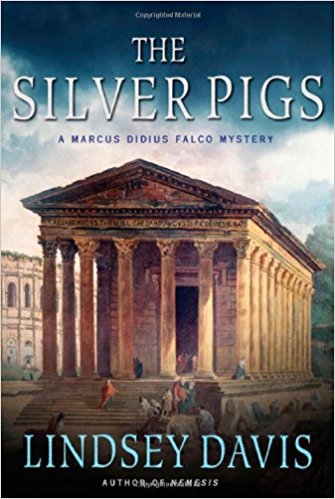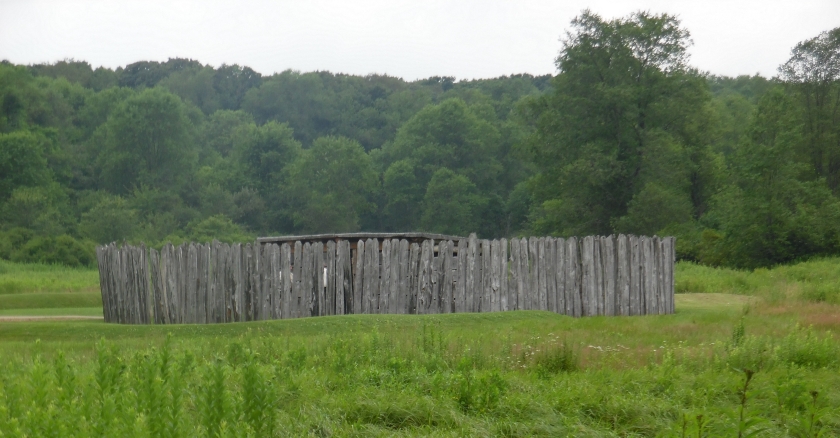A discussion of The Silver Pigs, by Lindsey Davis
first published 1989, republished 2006
 I’m an eclectic reader, reading almost anything from English canon literature to urban fantasy and many types of non-fiction as well. In this space I will highlight some examples of my favorite genre- historical fiction, starting off with an old favorite, The Silver Pigs. This book opens the series with Marcus Didius Falco, an informer (think- detective) in first century Rome. His efforts to figure out who killed a young girl he was trying to protect and how her death was connected to stolen silver ingots takes Falco to the farthest reaches of the Roman Empire and back to his hometown, Rome.
I’m an eclectic reader, reading almost anything from English canon literature to urban fantasy and many types of non-fiction as well. In this space I will highlight some examples of my favorite genre- historical fiction, starting off with an old favorite, The Silver Pigs. This book opens the series with Marcus Didius Falco, an informer (think- detective) in first century Rome. His efforts to figure out who killed a young girl he was trying to protect and how her death was connected to stolen silver ingots takes Falco to the farthest reaches of the Roman Empire and back to his hometown, Rome.
There are a lot of things to like about The Silver Pigs, including the humor, the complex relationships among the characters, and the well-developed back-story. But I’d like to talk about The Silver Pigs as an fine example of the three things I look for in quality historical fiction: character, plot and setting.
In all fiction, character is one of the most important aspects of story. I want the main character to be developed and likable enough that I want to spend time with this person, He or she does not have to be perfect, but must seem real. Especially in historical fiction, the protagonist must represent the times accurately and be believable in the context of the period.
Marcus Didius Falco fits the bill well. He is a Roman citizen and knows his rights as such. Though he acts tough and pretends not to care, he’s a guy I’d want on my side. He’d never admit it, but he is what I’d call a gentleman– not the kind with polished manners, a high class education, land or wealth, but the kind who is gallant and protective of those who are weak. Falco is not a Byronic hero, outside of society. No he’s firmly planted in the middle of Rome, dodging his landlord, watching over his own relatives, and hobnobbing with laundresses, guards, vigiles and senators alike. Though fictional, Falco, and his friends, family, clients, and even his enemies have become just as reall as the historical figures Davis includes, like Vespasian and his sons.
The second characteristic of good historical fiction is a plot that is interesting. Fun characters aren’t enough to make a good story. Something has to happen to keep me turning the pages. This is true of any fiction really, but the plot of historical fiction ought to also provide insight into life in the time it’s portraying. Characters can’t do things that don’t fit. I love the way Davis includes such bits as the carts waiting outside the city gates because carts weren’t allowed in before dark. This very accurate detail is key to helping Falco figure out who had access to a key piece of news that helps him identify the killer. Of course the main plot in the story revolves around the mines in Roman Britain and the smuggling of silver ingots. Falco’s adventures give readers great insight into the brutal life of the slaves working the mines
The most important aspect of good historical fiction is the setting. I read historical fiction so I can travel to a different time and place, so I want the details of that time and place to be accurate and developed enough to carry me into the world. I want to learn about the time and place, but I don’t want a textbook lesson. Davis gives wonderful detail about life in Rome, but never stops the story to lecture. For instance, we learn about the chaotic period shortly after the year of four emperors and the change from a republic to empire through Falco’s very strong opinions and the actions of the characters.
Even more than textbook history, I like learning about everyday life. DAvis does an excellent job here also. For instance Falco lives next door to a laundry. It seems that laundry in Rome was bleached with urine collected from public latrines and obliging neighbors. Not only is this an interesting bit of trivia, Lena’s vat of ‘bleach’ plays a key role in solving the murder.
Davis reveals Rome as a surprisingly modern urban area from its seamy side to its posh neighborhoods and everything in between, with as much detail as if she had actually lived there.
The story also takes readers out of the city of Rome to the cold, misty edge of the Roman Empire, Britain.This is a place Falco hates, for the weather, the lack of urban comforts, and the provincial attitudes. Davis give a fascinating look into how centers of civilization saw the fringes of empire as backward, dull, and uncivilized. (At attitude that is unfortunately still common in many parts of the world.)
So here we have a fun read that meets all of my criteria for good historical fiction; a likeable if gruff protagonist, an array of fully developed supporting cast, a plot dependent on the history of the time and place, and a setting that evokes the time and place so well I feel transported to Ancient Rome.
Best of all in this case, is that Lindsey Davis has written a whole series of mysteries following set in first century Rome. Readers can look forward to spending a lot of time with Marcus Didius Falco.


 The answer is LAND–untamed, and to European eyes, unclaimed, land, rich for the taking.
The answer is LAND–untamed, and to European eyes, unclaimed, land, rich for the taking.
